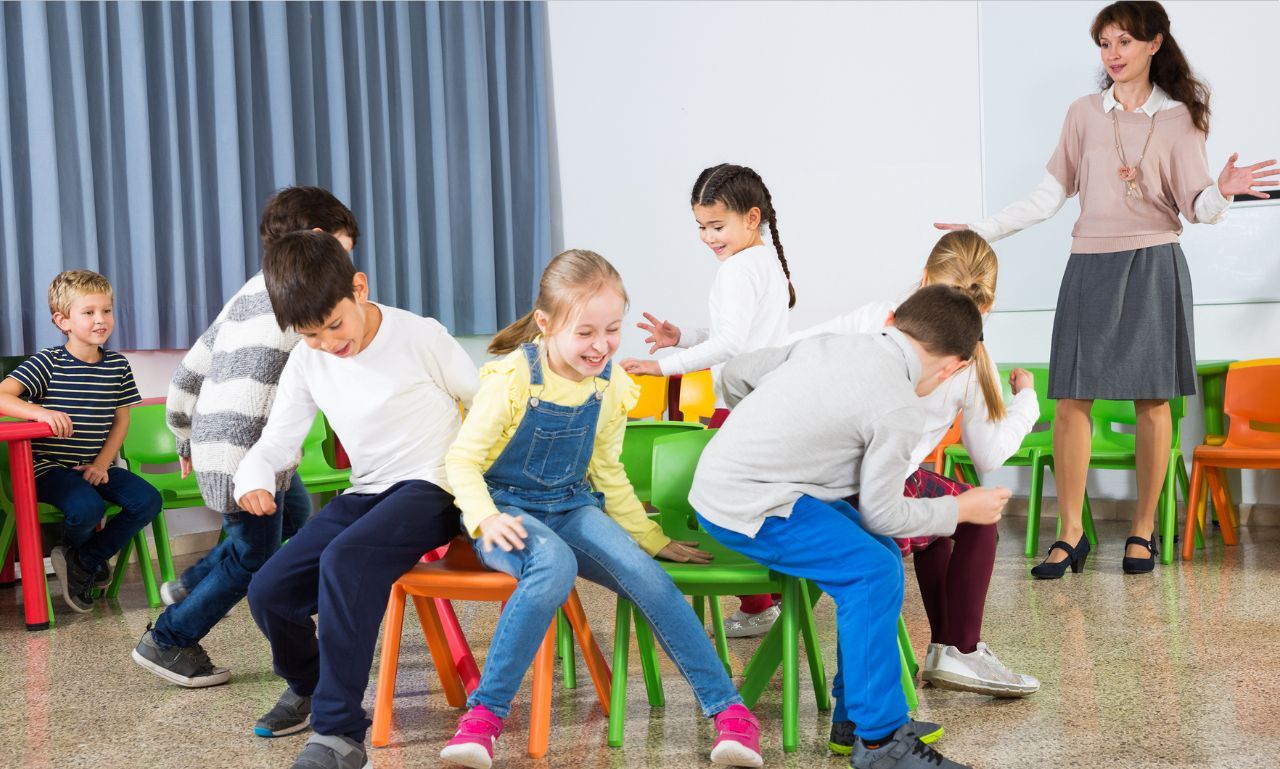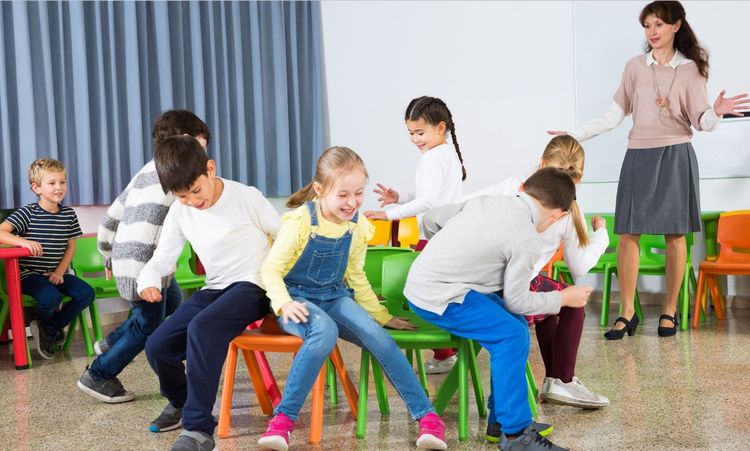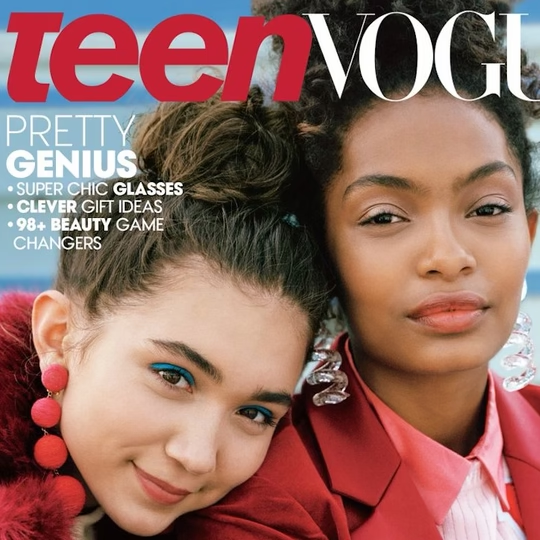Are you a music educator in search of an engaging activity to improve either your skills or those of your students and make them love music more? What if learning music could feel more like play than work? As we live in a world where traditional ways of teaching can be so monotonous, it's important that a music educator should always be looking for innovative ways to make learning accessible and fun. Take a step up the ladder of your music learning experience, and explore this carefully curated list of "10 Best Music Class Games" that will make learning a symphony of fun and excitement!
Pictionary
Pictionary isn’t just for drawing random objects—it's perfect for a music classroom, too. Here’s how it works: Divide your class into two teams and give each group a set of musical terms to draw. Whether it's "treble clef," "quarter note," or "forte," your students will be able to hone their music theory knowledge while having fun. Pictionary is great for reinforcing music vocabulary and helping students visualize complex concepts in a way that sticks.
Musical Chairs

It’s a timeless game that can easily be adapted to any lesson plan. Play music as students walk around a circle of chairs. When the music stops, they must find a seat. It’s simple, but when you add in a musical concept challenge—like asking them to name the instruments in the song or identify a key change—it becomes a fun learning experience.
The kids loved hearing a different style of music while practicing their listening skills. Plus, it’s an awesome way to work off some energy when you’re nearing the end of a class. Musical chairs gets students moving and thinking about musical features while having fun.
Dance Party
A dance party is an excellent way to get your students moving while learning about rhythm, tempo, and even dynamics. A Dance Party is exactly what it sounds like. You play fun, upbeat music and let the students dance freely. You can give them specific tasks—like dancing in pairs or interpreting certain musical styles through movement. Dance Party isn’t just about having fun; it encourages students to feel the rhythm and improve their coordination.
Hangout at the Zoo
This game takes inspiration from the animals at the zoo, with a fun twist to help your students practice their rhythmic skills. Assign each student an animal and give them a corresponding rhythm to clap, stomp, or tap. For example, a lion might get a loud, strong beat, while a bird might have a faster, lighter rhythm. The students must then "travel" around the zoo (your classroom) and interact with their classmates using their animal rhythms. It’s a creative, hands-on approach to learning rhythms and time signatures.
Simon Says
A well-loved classic, Simon Says can easily be adapted for a music class. Give your students musical instructions that they must follow only when you say, "Simon says." For example, “Simon says clap a quarter note,” or “Simon says hum a scale.” This game helps kids focus on listening, motor skills, and following instructions while reinforcing basic music concepts.
Freeze – Dance & Listen
Freeze is an exciting game that focuses on tempo and listening skills. Play music and encourage students to dance. When you pause the music, they must freeze in place. This game can be adapted to focus on musical dynamics (e.g., freeze on loud sounds or freeze when the music changes tempo) or even on musical phrases and intervals.
It’s such a simple concept, but it can be a total game-changer. I especially like how it encourages students to pay attention to musical details. And it’s a great way to mix in some movement to break up the routine.
Rock Paper Scissors

Rock Paper Scissors isn’t just for recess anymore. Try incorporating a musical twist by using terms like “quarter note,” “eighth note,” and “sixteenth note” to replace the classic rock, paper, and scissors. Each symbol represents a different beat or rhythm, and you can have students explain their choices with each round. This game is fast-paced, simple to set up, and reinforces rhythm and note values.
Treasure Hunt
Set up a treasure hunt where students must find items that match different musical concepts. For example, a student might find an item that corresponds to the concept of “sharp” (like a pencil with a sharp point), or “scale” (like a staircase). Hide items around the room or school and have the students work together to find them, making the game educational while encouraging teamwork. Treasure hunts engage kids in active learning while reinforcing music concepts in a hands-on, collaborative way.
Charades
Charades might seem like a game for family gatherings, but it’s an excellent way to reinforce music concepts in a fun and low-pressure way. Have students take turns acting out musical terms, instruments, or composers for their classmates to guess. You can add more layers by giving them a specific tempo, genre, or mood to act out .Charades taps into creativity and kinesthetic learning while making music theory more memorable.
Alphabet Game

For this game, students must come up with a music-related word for each letter of the alphabet. For example, “A” could be “Allegro,” “B” could be “Bass,” and so on. This game challenges their memory, vocabulary, and understanding of music terminology in a fun, competitive way.
The Alphabet Game is perfect for younger or beginner students because it introduces them to key terms and concepts in a structured yet playful manner. This game reinforces vocabulary, alphabetical knowledge, and helps students remember key music terms.
What Game Has the Best Music Ever?
The "best" music game really depends on your teaching style and the class's age group. Personally, I believe Musical Chairs is a crowd favorite because of its mix of movement and musical listening. It can be adapted to any lesson, and the kids get the added benefit of working with a variety of musical genres. But there’s no one-size-fits-all answer—experiment and see which game sparks the most enthusiasm in your class!
What Is the Most Popular Game in the Music Class?
While every class is different, Pictionary and Simon Says are two games that consistently rank high in popularity. Pictionary allows students to challenge each other’s understanding of music terms, while Simon Says helps them focus on musical details through physical movement.
What Is the Best Passing Game for Music Class?
The Beat Passing game is an excellent choice if one's looking for a fast-paced, active game that really focuses on rhythm. Students make a circle; a certain rhythmic pattern is passed from one person to another using claps or any kind of taps. The rhythm gets faster and faster, which makes this game quite challenging and, at the same time, fun.
Conclusion
Games in the music classroom aren't just about fun—they’re about making music come alive for your students. They create opportunities for learning that stick in students’ memories far longer than traditional methods. The key is to stay flexible and creative and keep your students at the center of your teaching approach. So the next time your students need a break or you want to reinforce a musical concept, try one of these games, and watch your classroom come to life.
Also Read: Best Books to Read to a Kindergarten Class




